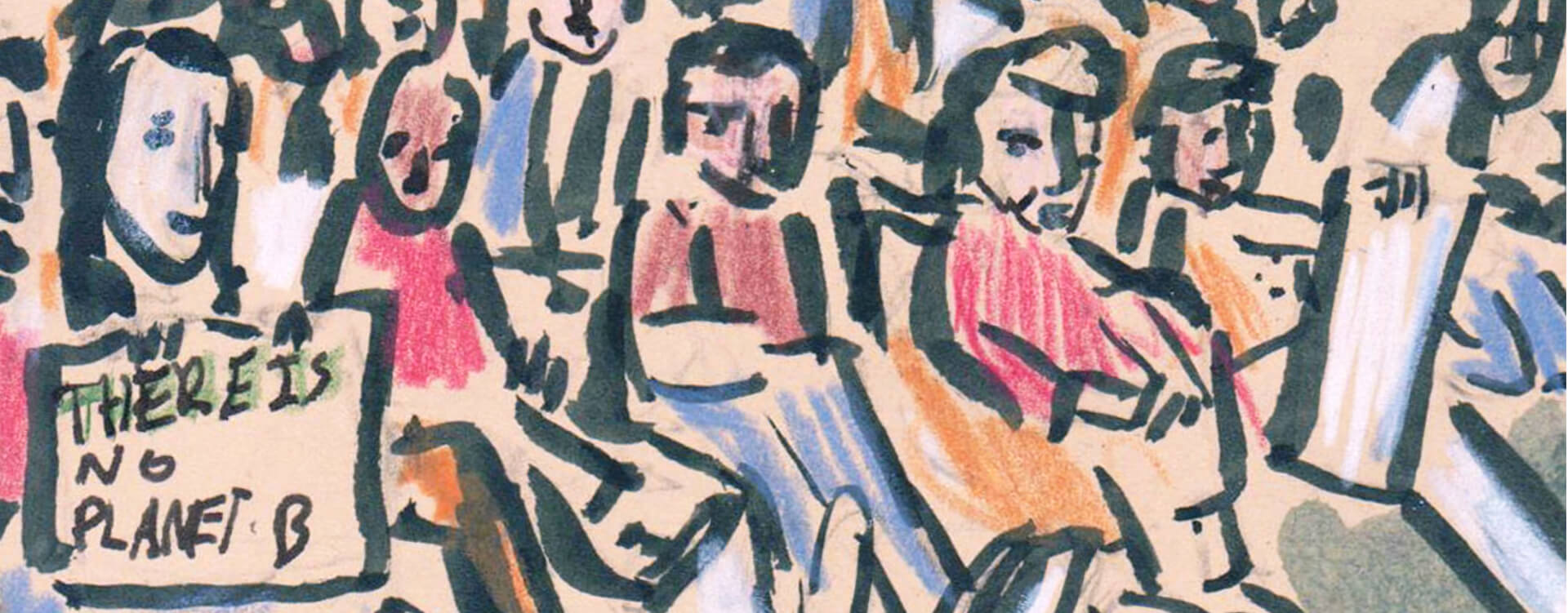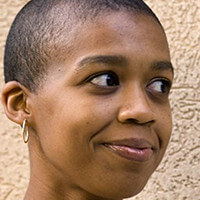I walk through my neighborhood. Dressed warmly for the unseasonably cool day. The sky is clear, and the sun is shining. It’s so beautiful, my heart assumes that days like this will never end.
But, they will. Within the past two weeks, we’ve heard of numerous scientific reports that highlight the climate crisis in terrifying ways, including the United Nations’ Global Assessment. In a way that they have not before, news sources have reported on multiple studies that attach frighteningly near deadlines for climate action.
80 years or 30. Or barely a decade.
Despite attention on entrenched politicians and captains of industry, foolishly refusing to acknowledge the existence of climate change, the likely future of the Earth’s system is clear; our planet’s regular functions are breaking down. And while the planet itself will survive the shifts, we almost certainly will not.
In the Polluting Nations, whose majorities are not directly dependent upon the climate in order for survival, the seeming inevitability of climate breakdown/correction and concomitant decimation of the human population may seem like too much to handle. Conversely, attention to and potential solutions for climate change tend to center the very cultures, regions, and ways of thought that started this mess, and often render mute and invisible groups that have long-standing and still-existing traditions of environmental care and/or stewardship. (Note, for example, that the most accessible news links/reports about climate change — the above included — tend to prioritize Western and/or White voices, even though human-caused climate change began and has continued due to practices that directly prioritize Western and White life. But that will be addressed in the second half of this article.)
So we ignore it. We distract ourselves. We try not to panic. We do small things to make ourselves feel better. We recycle. We take reusable bags to the store. We post on social media about Earth Day.
The Earth, she has been telling us that those changes don’t make a difference — not an important enough difference, anyway. Over the last two decades our sea levels have continued to rise, tens of thousands of animal and plant species have gone extinct, and we experience an increasing number of unprecedented weather events.
Turns out that changing our light bulbs didn’t help very much.
It would seem, then, that rectifying the problem is much bigger than anything than we’ve previously done.
So what do we do?
When we actually take the time to consider the gravity of climate change — the near-certainty of its shifting beyond on our living requirements — we are likely to wonder many things: why aren’t our governments being more proactive? What can I do to prevent something that seems so huge? What can we do? Is there, at this point, anything that can possibly be done?
While a near-impossible task, certain scientists believe that there is still a small window in which we can stave off the worst of the effects of climate change, as the opportunity to prevent it has already passed us by. Just like other members of the general public consider our climate crisis, many of us interested in education consider it, too. We may consider it as we plan our next trips with our children. Or when we think about how we source our food, or dispose of our waste. Many of us understand our connection to Self-Directed Education as being something that informs and is informed by our care for the planet. Some of us even understand schools and schooling as inherently tied to the oppressive, destructive forces that began and compelled climate change.
And while all of that is valuable, it may be a little moot. After all, if even the more conservative scientists’ predictions occur, schools and schooling won’t be around for very long, anyway. Almost nothing will.
Keeping this in mind, I propose that those of us in Self-Directed Education understand self-direction as more than just a vital course for the future. We should, instead, understand Self-Directed Education as possibly the one surviving education practice of our near future. Schools will not be an option, because they could not possibly exist in the same way that they do now. Arguments about the inanity of testing won’t matter. The ridiculousness of standardized testing won’t matter. The training of children using a centuries-old factory schedule won’t matter. Grades don’t matter. Freedom for nap time and bodily functions won’t matter. None of that will be able to matter.
Rather than considering Self-Directed Education as the best option in a variety of education practices, then, it may be more accurate to understand Self-Directed Education as likely the only education practice that will remain, at least in the near future.
While this may sound unnecessarily ominous, or foreshadowing in a dystopian novel, it’s time that we face the fact that our grandchildren, if not our children, will be living in a world significantly different from the one that we currently experience, a world which many of us have at least partial culpability in creating. Failure to collectively face this fact now, of all possible times, would be indicative of a self-centeredness defying reason.
If we do not face the fact of climate change, we guarantee our destruction simply because we don’t want to think about it. This cannot be.
So, if we face it, if we understand that we are at the crossroads of our own demise, how do we really rethink education? How do we rethink everything? Rather than troubling our minds with whether our great aunt is going to accept or educational practices, or deciding whether our shared self-directed spaces are adequate for us, we should start thinking about self-direction as the soon-to-be educational practice for most of humanity.
And when we assume that, what does self-direction then mean? If we’re focusing on our children’s ability to explore their world in the ways that best works for them – in the way that will open them up to their own self-fulfillment – it is incumbent upon us adults to try to ensure that liveable world exists for them when they’re older.
When teetering on the edge of climate catastrophe (or the end of it, depending on your perspective), the focus of our Self-Directed Education practices must change, just as everything must change. We must ask ourselves different questions, with different goals in mind.
We must imagine a future that we’d hesitate to imagine. Then we must imagine our children in it.
Then we must try to stop it.
- Part One
- Part Two
This article was originally published here on May 14, 2019 and has been reprinted by permission of the author.
—
[1] The United Nation’s IPBES Global Assessment for Policymakers
[2] Democracy Now, “Climate Change-Induced Sea Level Rise Could Displace over 180 Million“
[3] The Guardian, “Human Society under Urgent Threat from Loss of Earth’s Natural Life“
[4] CNN, “We Have Less Time than You Think to Jump-start Climate Action“
[5] Rolling Stone, “Federal Climate Change Report Warns of Bleak Economic, Societal Impact“
[6] Nature: International Weekly Journal of Science, “Three Years to Safeguard Our Climate“
[7] WBUR.org, “Humans Have Three Years to Stave Off Climate Catastrophe, ‘Uninhabitable Earth’ Author Says“
If you enjoyed this article and feel called to give back to ASDE, here are ways you can support our work:
- Donate money
- Share our content with others! Click one of the buttons above to easily share on Twitter, Facebook, or email.
- Consider becoming a Contributor for Tipping Points
Tipping Points Magazine amplifies the diverse voices within the Self-Directed Education movement. The views expressed in our content belong solely to the author(s). The Alliance for Self-Directed Education disclaims responsibility for any interpretation or application of the information provided. Engage in dialogue by reaching out to the author(s) directly.






